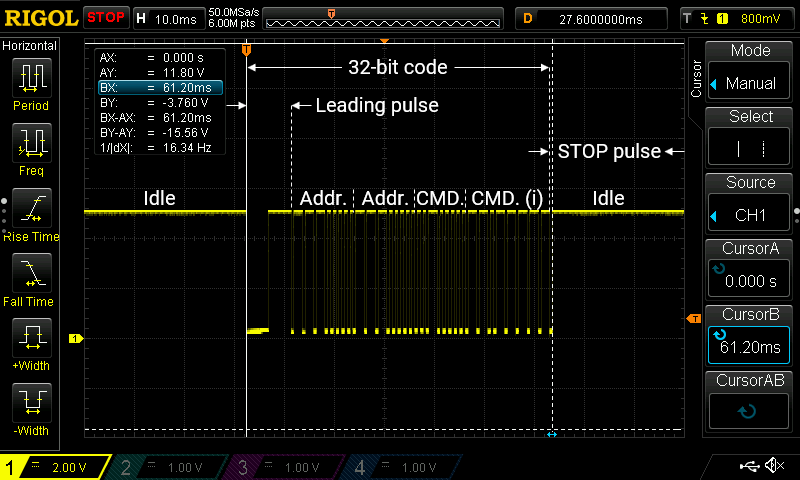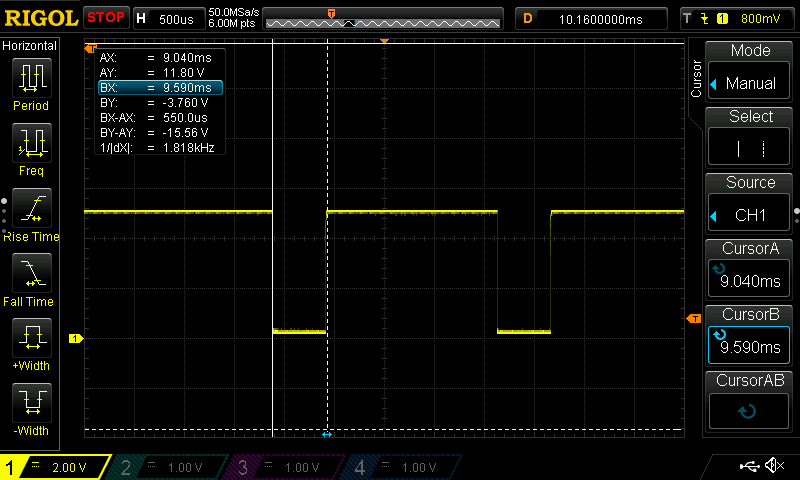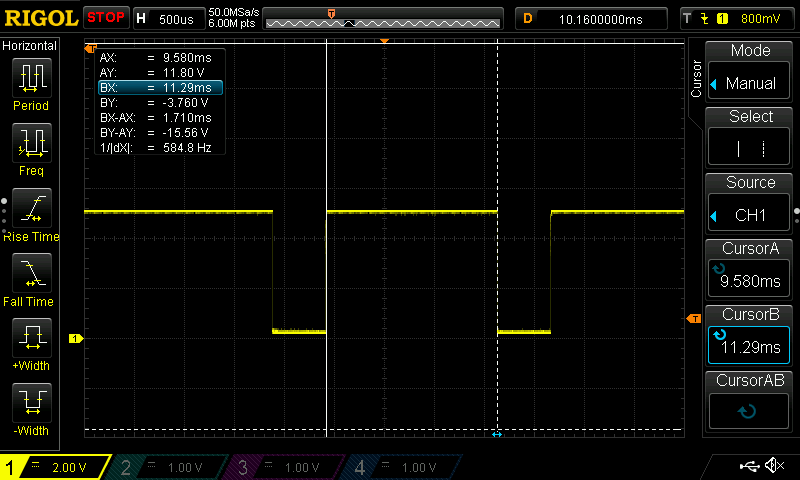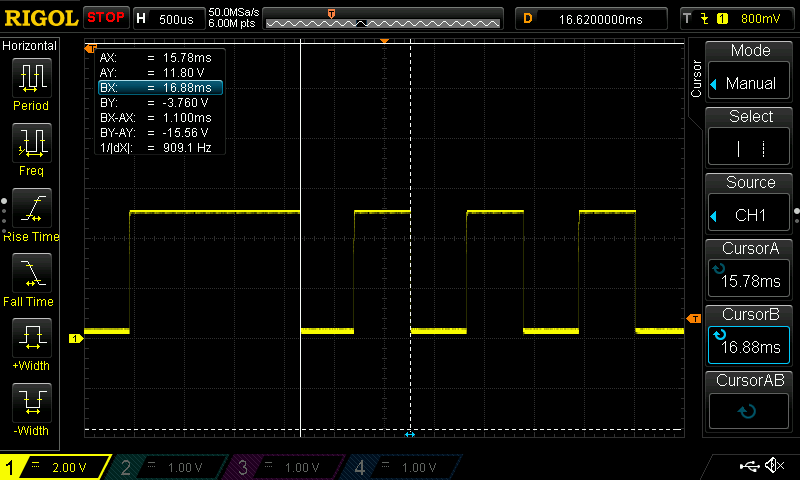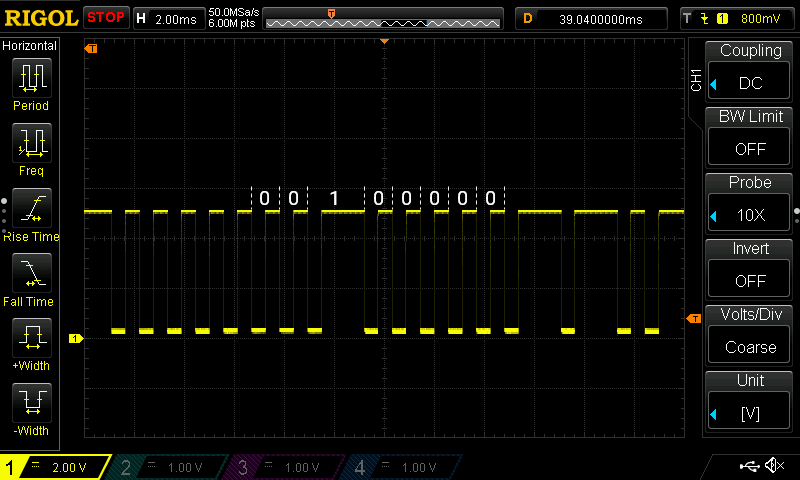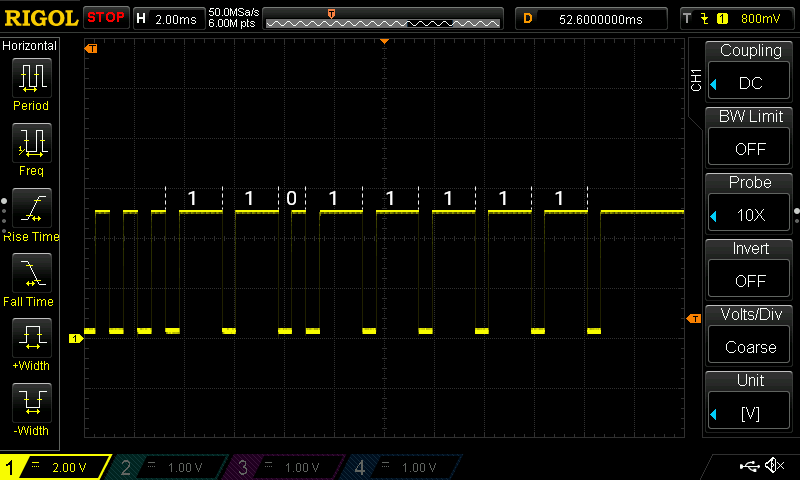
Objective
The objective of this laboratory is to demonstrate a standard of infrared communication, i.e., the Samsung Protocol.
Preparation
The following schematic details the hardware setup.
Table 1 lists the components used in the schematic.
| ID | Component | Manufacturer Part No. | Value | Qty. |
| Base Components | ||||
| IC1 | MCU | PIC24FJ256GA702-I/SP | – | 1 |
| IC2 | Regulator | LM1117T-3.3/NOPB | 3.3 V / 800 mA | 1 |
| C1 & C2 | Capacitor (tantalum) | TAP106K025SRW | 10 uF / 25 V | 2 |
| C3 & C4 | Capacitor (ceramic) | SR155C103KARTR1 | 0.01 uF / 50 V | 2 |
| C5 & C6 | Capacitor (ceramic) | SR155C104KARTR1 | 0.1 uF / 50 V | 2 |
| C7 & C8 | Capacitor (ceramic) | SR151A150JARTR1 | 15 pF / 100 V | 2 |
| C9 | Capacitor (ceramic) | FG16X7R1E106KRT06 | 10 uF / 25 V | 1 |
| Y1 | Crystal | ABL-16.000MHZ-B2 | 16 MHz | 1 |
| R1 | Resistor | SFR2500001002FR500 | 10 kΩ | 1 |
| R2 | Resistor | SFR2500001004FR500 | 1 MΩ | 1 |
| J1 | Header (6-way) (PICkit 5) | 22-27-2061 | – | 1 |
| Additional Components | ||||
| R3 | Resistor | SFR2500001050FR500 | 105 Ω | 1 |
| D1 | LED (infrared) | WP710A10F3C | 20 mA | 1 |
Slides #1 to #9 represent an infrared signal from a Samsung television remote control (button #1), captured by an oscilloscope, using an infrared receiver module, as shown at the top of this page. There are three terminals: signal (orange), power (red), and ground (black). Slide #1 is an overview of the Leading pulse, the 32-bit code, and a STOP pulse. The oscilloscope trigger was set to capture the infrared signal, with a total time of approximately 62 ms. The measured leading pulse, as shown in slide #2, closely resembles the timing of the leading edge explained in the Infrared theory page. Likewise, the measured times for signal 1 and signal 0, as shown in slides #3 to #4 and slide #5, respectively, closely resemble the timing of signal 1 and signal 0, respectively. The same can be said about the STOP pulse at the end.
Refer to the following source code.
/* Infrared (source code) */
/* MCU: PIC24FJ256GA702 */
/* Author: Michael */
/**************************** Configuration Bits ******************************/
// FSEC
#pragma config BWRP = OFF // Boot Segment Write-Protect bit (Boot Segment may be written)
#pragma config BSS = DISABLED // Boot Segment Code-Protect Level bits (No Protection (other than BWRP))
#pragma config BSEN = OFF // Boot Segment Control bit (No Boot Segment)
#pragma config GWRP = OFF // General Segment Write-Protect bit (General Segment may be written)
#pragma config GSS = DISABLED // General Segment Code-Protect Level bits (No Protection (other than GWRP))
#pragma config CWRP = OFF // Configuration Segment Write-Protect bit (Configuration Segment may be written)
#pragma config CSS = DISABLED // Configuration Segment Code-Protect Level bits (No Protection (other than CWRP))
#pragma config AIVTDIS = OFF // Alternate Interrupt Vector Table bit (Disabled AIVT)
// FBSLIM
#pragma config BSLIM = 0x1FFF // Boot Segment Flash Page Address Limit bits (Enter Hexadecimal value)
// FOSCSEL
#pragma config FNOSC = PRIPLL // Oscillator Source Selection (Primary Oscillator with PLL module (XT + PLL, HS + PLL, EC + PLL))
#pragma config PLLMODE = PLL96DIV4 // PLL Mode Selection (96 MHz PLL. Oscillator input is divided by 4 (16 MHz input))
#pragma config IESO = OFF // Two-speed Oscillator Start-up Enable bit (Start up with user-selected oscillator source)
// FOSC
#pragma config POSCMD = HS // Primary Oscillator Mode Select bits (HS Crystal Oscillator Mode)
#pragma config OSCIOFCN = ON // OSC2 Pin Function bit (OSC2 is general purpose digital I/O pin)
#pragma config SOSCSEL = OFF // SOSC Power Selection Configuration bits (Digital (SCLKI) mode)
#pragma config PLLSS = PLL_PRI // PLL Secondary Selection Configuration bit (PLL is fed by the Primary oscillator)
#pragma config IOL1WAY = OFF // Peripheral pin select configuration bit (Allow multiple reconfigurations)
#pragma config FCKSM = CSDCMD // Clock Switching Mode bits (Both Clock switching and Fail-safe Clock Monitor are disabled)
// FWDT
#pragma config WDTPS = PS1 // Watchdog Timer Postscaler bits (1:1)
#pragma config FWPSA = PR32 // Watchdog Timer Prescaler bit (1:32)
#pragma config FWDTEN = OFF // Watchdog Timer Enable bits (WDT and SWDTEN disabled)
#pragma config WINDIS = OFF // Watchdog Timer Window Enable bit (Watchdog Timer in Non-Window mode)
#pragma config WDTWIN = WIN50 // Watchdog Timer Window Select bits (WDT Window is 50% of WDT period)
#pragma config WDTCMX = WDTCLK // WDT MUX Source Select bits (WDT clock source is determined by the WDTCLK Configuration bits)
#pragma config WDTCLK = SYSCLK // WDT Clock Source Select bits (WDT uses system clock when active, LPRC while in Sleep mode)
// FPOR
#pragma config BOREN = OFF // Brown Out Enable bit (Brown Out Disabled)
#pragma config LPCFG = OFF // Low power regulator control (No Retention Sleep)
#pragma config DNVPEN = DISABLE // Downside Voltage Protection Enable bit (Downside protection disabled when BOR is inactive)
// FICD
#pragma config ICS = PGD1 // ICD Communication Channel Select bits (Communicate on PGEC1 and PGED1)
#pragma config JTAGEN = OFF // JTAG Enable bit (JTAG is disabled)
// FDEVOPT1
#pragma config ALTCMPI = DISABLE // Alternate Comparator Input Enable bit (C1INC, C2INC, and C3INC are on their standard pin locations)
#pragma config TMPRPIN = OFF // Tamper Pin Enable bit (TMPRN pin function is disabled)
#pragma config SOSCHP = ON // SOSC High Power Enable bit (valid only when SOSCSEL = 1 (Enable SOSC high power mode (default))
#pragma config ALTI2C1 = ALTI2CEN // Alternate I2C pin Location (SDA1 and SCL1 on RB9 and RB8)
/************************* Configuration Bits (end) ***************************/
#define FCY 16000000 // FCY = FOSC / 2 (FCY: Instruction clock cycle) (FOSC: System clock cycle)
#define LED_IR_1 LATBbits.LATB6 // LED_IR_1 associated with MCU Pin #15
#include <libpic30.h> // Delay functions
#include <xc.h> // MCU pin mapping
int main(void)
{
// Set pin direction
TRISBbits.TRISB6 = 0; // Set MCU Pin #15 to output (LED_IR_1)
/************************* configure MCU modules **************************/
// Analog Ports
ANSA = 0; // Disable A (PIC24FJ256GA702 datasheet p.126 Table 11-1)
ANSB = 0;
// Comparators
CM1CONbits.CEN = 0; // Disable #1 (PIC24FJ256GA702 datasheet p.310 Register 25-1)
CM2CONbits.CEN = 0;
CM3CONbits.CEN = 0;
// ADC
AD1CON1bits.ADON = 0; // Disable module (PIC24FJ256GA702 datasheet p.291 Register 24-1)
/********************** configure MCU modules (end) ***********************/
/*************************** declare functions ****************************/
void Carrier(void) // Function to generate carrier frequency (38kHz)
{
LED_IR_1 = 1;
__delay_us(13);
LED_IR_1 = 0;
__delay_us(13);
}
void Leading_Edge(void) // Function to generate leading edge
{
for (int i = 0; i < 171; i ++) // 171 cycles of carrier frequency for HIGH period
{
Carrier();
}
LED_IR_1 = 0;
__delay_us(4500); // Delay for LOW period
}
void Signal_1(void) // Function for HIGH signal (1)
{
for (int i = 0; i < 21; i ++) // 21 cycles of carrier frequency for HIGH period
{
Carrier();
}
LED_IR_1 = 0;
__delay_us(1710); // Delay for LOW period
}
void Signal_0(void) // Function for LOW signal (0)
{
for (int i = 0; i < 21; i ++) // 21 cycles of carrier frequency for HIGH period
{
Carrier();
}
LED_IR_1 = 0;
__delay_us(550); // Delay for LOW period
}
void STOP(void) // Function for STOP condition
{
for (int i = 0; i < 21; i ++) // 21 cycles of carrier frequency for HIGH period
{
Carrier();
}
LED_IR_1 = 0;
__delay_ms(1000);
}
/************************ declare functions (end) *************************/
while (1)
{
Leading_Edge(); // Initiate IR communication for Channel #1
// Address
Signal_1();
Signal_1();
Signal_1();
Signal_0();
Signal_0();
Signal_0();
Signal_0();
Signal_0();
// Address
Signal_1();
Signal_1();
Signal_1();
Signal_0();
Signal_0();
Signal_0();
Signal_0();
Signal_0();
// Command
Signal_0();
Signal_0();
Signal_1();
Signal_0();
Signal_0();
Signal_0();
Signal_0();
Signal_0();
// Command (inv.)
Signal_1();
Signal_1();
Signal_0();
Signal_1();
Signal_1();
Signal_1();
Signal_1();
Signal_1();
STOP(); // Initiate a STOP pulse
}
return 0;
}Testing
Connect a power supply, point the infrared LED towards a Samsung television, and observe the channel change to 1.
Conclusion
The code can be modified to include a keypad, with each button controlling a specific signal such as channel #1, #2, #3, volume up, volume down, ON/OFF, etc. Based on the television responding to the infrared LED, this setup can be used as a basis for projects.
